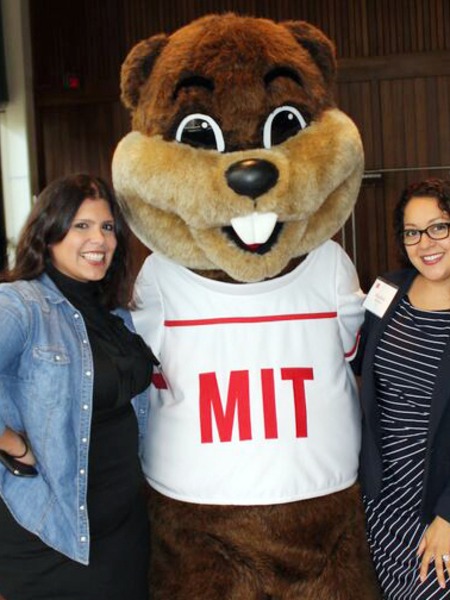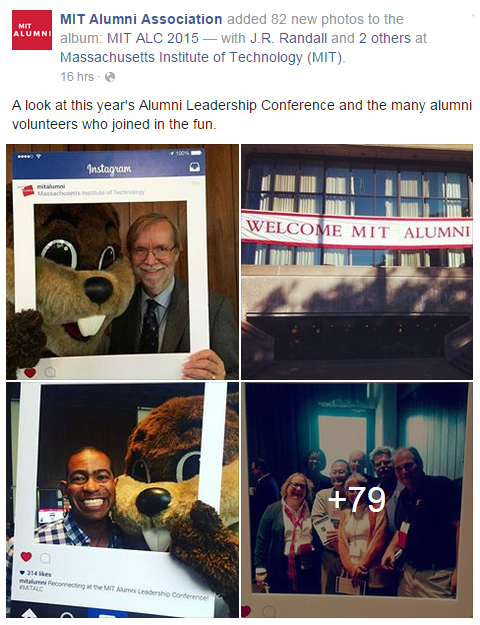MIT Volunteers Celebrate, Connect, and Cultivate Change at Annual Leadership Conference
-
-
slice.mit.edu
Filed Under

Recommended
The 2015 MIT Alumni Leadership Conference took place on Sept. 25-26 with a record 700 registered for the weekend’s events. Alumni attendance at ALC was up 9.6% and, in addition, 232 non-ALC participants registered for the graduate-focused Startup in America panel, and 143 watched the live webcast of the Deans Panel.
The two-day conference kicked off with Professor Marty Culpepper SM ’97, PhD ’00—MIT’s official “Maker Czar”—and his talk on maker spaces at the Institute. Culpepper addressed the question “Why does making matter?” and discussed that while MIT has more maker spaces than any other institutions in the world (130,000 square feet), the Institute needs to shift in the way these spaces are used.
Day one of ALC included a keynote panel discussion, moderated by Chancellor for Academic Advancement W. Eric Grimson PhD ’80, that featured the deans from MIT’s five schools: Melissa Nobles, the Kenan Sahin Dean at School of Humanities, Arts, and Social Sciences; School of Architecture and Planning Dean Hashim Sarkis; David C. Schmittlein, the John C. Head III Dean at the Sloan School of Management; School of Science Dean Michael Sipser; and School of Engineering Dean Ian Waitz.
 The conversation included topics such as cross-department collaboration; what keeps the deans up at night; basic research funding; and what is needed to maintain top rankings for each school. Schmittlein stressed that MIT must “keep pursuing a distinctive path in the world.”
The conversation included topics such as cross-department collaboration; what keeps the deans up at night; basic research funding; and what is needed to maintain top rankings for each school. Schmittlein stressed that MIT must “keep pursuing a distinctive path in the world.”
The Startup in America session on Friday evening, with nearly 300 in attendance, offered insight and advice to the audience from a panel of entrepreneurial alumni. Following the event, attendees joined all other ALC guests for a festive reception.
Saturday’s sessions began with a keynote conversation featuring MIT Chancellor Cynthia Barnhart SM ’86, PhD ’88 and MIT students discussing the Mind+Hand+Heart Initiative, which aims to change the conversations and stigmas around mental health and improve access and resources. This insightful presentation was followed by an informative update from President and Chair of the Alumni Association John Chisholm ’75, SM ’76.
MIT Sloan professor Renée Richardson Gosline concluded the morning sessions with a powerful talk on her research involving the relationship between social networks and consumer brand relationships. She stressed the notion of authentic leadership, recognizing that how you think you’re leading might not be the same as how you’re perceived.
“It's about aligning the way you want to affect those around you with the way that you do,” says Gosline. And one good way to do this, she said, is to be vulnerable, yes vulnerable, and to tell your story in a genuine way to those around you. “The stories are what inspire and allow people to connect.”
The story of MIT’s ALC weekend was rich with many other highlights this year, including sessions like Thought Leaders and Planning + (Programming x Promotion) = Participation (a session on alumni club strategy and best practices), plus the popular traveling Instagram frame, which made its way onto MITAA social media as well, along with my other posts by alumni and friends throughout the weekend using the hashtag #mitalc. Overall, attendees and staff posted 845 tweets from 155 unique twitter accounts and 111 unique alumni shared or engaged with content on Facebook.
The conference closed with Saturday evening’s Leadership Awards Celebration. 23 alumni and five groups were honored for their dedication to MIT, including Robert V. Ferrara ’67, Jonathan M. Goldstein ’83, ’84, SM ’86, Robert N. Gurnitz ’60, SM ’61, PhD ’66, and Theresa M. Stone SM ’76, who received the Bronze Beaver Award, the highest honor that the Alumni Association bestows up on its volunteers.
Listen to a Slice of MIT Podcast with this year’s recipients.
Visit the ALC website to watch videos and download handouts from some of the breakout sessions.







